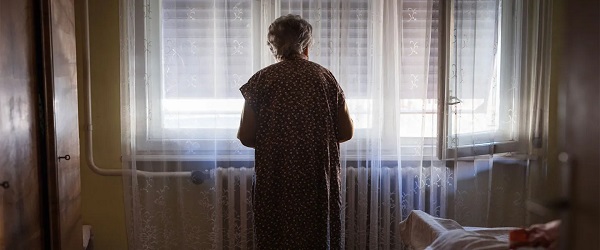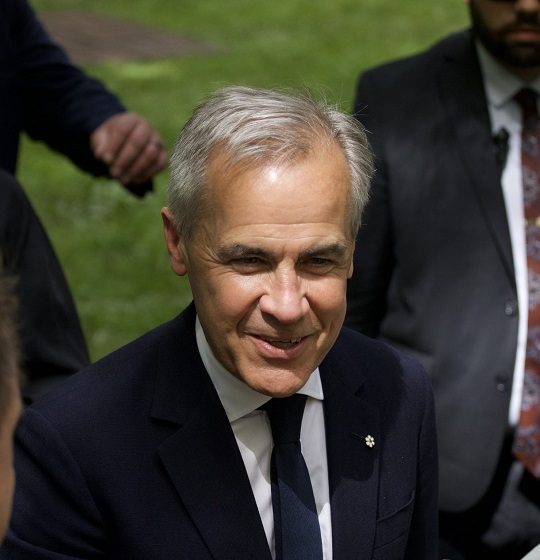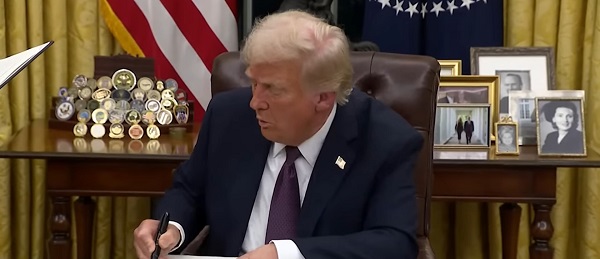Business
A tiny spark of hope in another soul-crushing round of CRTC hearings: Peter Menzies

From the MacDonald Laurier Institute
By Peter Menzies
It was as if the internet — the most democratizing, weird, wonderful, frightening and important technological development in communications since the printing press — had never been invented.
Earlier this month, halfway through answering a question from the House of Commons Industry committee, Annette Verschusen abruptly removed her headphones, stood up, unplugged, and walked out.
It was shocking.
And yet, in a rascally sort of way, I admired it. Yes, yes, the former head of Home Depot Canada and the chancellor of Cape Breton University recently had to resign as chair of Sustainable Development Technology Canada and is under investigation by the Ethics Commissioner for approving hundreds of thousands of dollars in Green Fund grants to her own company, NRStor Inc. But still, who among us hasn’t fantasized about acting out in similar fashion when the blinding light of revelation strikes and it suddenly dawns on you: “WTF am I even doing here? I don’t need this shit.”
And, in your fantasy, you just get up and leave. Like Verschusen did.
I confess I once harboured a similar impulse towards the end of an arduous Canadian Radio-television and Telecommunications Commission (CRTC) hearing along the lines of the three-week-long epic that concluded Dec. 8.
Part of my despair was likely due to being tired. Everyone who appears before a CRTC panel (I was a Commissioner for a decade) deserves one’s full attention and there are thousands of pages of required reading in the weeks leading up to and in the evenings during a hearing.
Then there’s the hearing room. Seemingly designed by Dante Alighieri to sap the will to live from those condemned to work within it, the room’s about the size of an elementary school gym. There are no windows or art and the ambiance complements the soulless mid-century Soviet architectural style of Gatineau’s public buildings.
But — and I hesitate to confess this — it was the relentless rent-seeking that made my mind wander during breaks and impishly imagine what would happen if I just unplugged my laptop, got up, walked out through the crowds, got a cab straight to the airport and never came back. Because eventually, most CRTC hearings devolve into two broad categories. One is a series of presentations from large, protected and profitable companies explaining the dire consequences if they don’t get their way. The other is a seemingly endless parade of well-meaning groups begging for the large companies’ money lest their roles as cultural saviours are diminished. It’s predictably tiresome, tedious and exhausting. But the stakeholders know that commissioners come and go on a regular basis, so no cause to worry about them getting wise to the game.
I was reminded of that inappropriate thought while monitoring the final week of this most recent hearing. When I wasn’t watching, I was reading transcripts and experiencing it all in a mildly PTSDish sort of way.
This hearing was the first of three scheduled to implement the Online Streaming Act (Bill C-11) which amended the Broadcasting Act for the first time since 1991 in order to “modernize” it by — absurdly, in my view — defining the internet as broadcasting and putting it lock, stock and barrel under the authority of the CRTC, which was first formed in 1968 to make sure Anne Murray and Terry Jacks got fair play on the radio airwaves.
This first phase — in which offshore streamers such as Netflix and Disney+ made their regulatory debut — was supposed to be about three things:
- Defining the cutoff line — $10 million, $25 million or $50 million in annual revenue — the CRTC would use to study which companies must buck up and fund Canadian content;
- Deciding how much those companies would have to pay;
- Determining how many different funds should get the loot and how many groups would be involved — BIPOC, Indigenous, LGBTQ2S, etc.
It wasn’t the debilitating boredom of it all that was the most difficult to overcome. Nor was it the acronym-laden banter between the panel and stakeholders that rendered the discourse incomprehensible to ordinary Canadians. And while the manner in which consumers’ interests were disregarded was beyond frustrating, that wasn’t the worst part.
The seriously soul-crushing aspect was that this hearing looked, sounded and felt exactly like CRTC broadcasting hearings have looked, sounded and felt for 30 years.
It was as if the internet — the most democratizing, weird, wonderful, frightening and important technological development in communications since the printing press — had never been invented.
It was a funereal procession of grim-faced presenters from large, often outrageously profitable domestic companies involved in providing telephone, mobile, internet, cable and broadcasting crying woe are we, declaring the industry to be in “crisis,” demanding “urgent” relief from their regulatory burdens and threatening the jobs of thousands of workers should they not get their way. They even got the ball rolling on a whole new fund for local news production lest democracy die. Because, without them, of course it will.
This was followed by a chorus line of vested interests explaining how important it is for the regulator to ensure lotsa cash flows in their direction lest the nation’s creative aesthetic dies under the jackboot of American cultural imperialism. And — OMG! — whatever happens don’t make me have to move to Hollywood. You know, like poor old Ryan Reynolds did.
There were, to be fair, bright parts when the companies and workers that have built success on the internet politely explained, with respect, that what the CRTC was talking about makes no sense in 2023. None whatsoever. Some even begged the panel of Commissioners to please “do no harm.”
Welcome as something — anything — “modern” was during what otherwise was a bad acid flashback to decades past, it was not enough to revive any sense of optimism. At least not until YouTuber J.J. McCullough — the penultimate presenter — showed up.
In words everyone can understand, he said that we are in “a time when there’s a huge thriving sort of forward‑looking modern youthful wing of the Canadian cultural economy and cultural space in the form of online content creators who are often very entrepreneurial, very self‑directed people that have started from very little and have become very successful.”
And that there is concern with “the idea that those people are perhaps in some way like a problem that now needs to be solved in order to sort of subsidize people that, you know, god bless them, are sort of clinging to perhaps a dream of success in a medium that there just isn’t market or public demand for any more.”
It offered a small flicker of hope that, somehow, the 21st century and all its possibilities might yet survive the CRTC’s smothering embrace.
Then again, as the saying goes, it’s the hope that kills you.
Peter Menzies is a senior fellow with the Macdonald-Laurier Institute, past vice-chair of the CRTC and a former newspaper publisher.
Automotive
Federal government should swiftly axe foolish EV mandate

From the Fraser Institute
Two recent events exemplify the fundamental irrationality that is Canada’s electric vehicle (EV) policy.
First, the Carney government re-committed to Justin Trudeau’s EV transition mandate that by 2035 all (that’s 100 per cent) of new car sales in Canada consist of “zero emission vehicles” including battery EVs, plug-in hybrid EVs and fuel-cell powered vehicles (which are virtually non-existent in today’s market). This policy has been a foolish idea since inception. The mass of car-buyers in Canada showed little desire to buy them in 2022, when the government announced the plan, and they still don’t want them.
Second, President Trump’s “Big Beautiful” budget bill has slashed taxpayer subsidies for buying new and used EVs, ended federal support for EV charging stations, and limited the ability of states to use fuel standards to force EVs onto the sales lot. Of course, Canada should not craft policy to simply match U.S. policy, but in light of policy changes south of the border Canadian policymakers would be wise to give their own EV policies a rethink.
And in this case, a rethink—that is, scrapping Ottawa’s mandate—would only benefit most Canadians. Indeed, most Canadians disapprove of the mandate; most do not want to buy EVs; most can’t afford to buy EVs (which are more expensive than traditional internal combustion vehicles and more expensive to insure and repair); and if they do manage to swing the cost of an EV, most will likely find it difficult to find public charging stations.
Also, consider this. Globally, the mining sector likely lacks the ability to keep up with the supply of metals needed to produce EVs and satisfy government mandates like we have in Canada, potentially further driving up production costs and ultimately sticker prices.
Finally, if you’re worried about losing the climate and environmental benefits of an EV transition, you should, well, not worry that much. The benefits of vehicle electrification for climate/environmental risk reduction have been oversold. In some circumstances EVs can help reduce GHG emissions—in others, they can make them worse. It depends on the fuel used to generate electricity used to charge them. And EVs have environmental negatives of their own—their fancy tires cause a lot of fine particulate pollution, one of the more harmful types of air pollution that can affect our health. And when they burst into flames (which they do with disturbing regularity) they spew toxic metals and plastics into the air with abandon.
So, to sum up in point form. Prime Minister Carney’s government has re-upped its commitment to the Trudeau-era 2035 EV mandate even while Canadians have shown for years that most don’t want to buy them. EVs don’t provide meaningful environmental benefits. They represent the worst of public policy (picking winning or losing technologies in mass markets). They are unjust (tax-robbing people who can’t afford them to subsidize those who can). And taxpayer-funded “investments” in EVs and EV-battery technology will likely be wasted in light of the diminishing U.S. market for Canadian EV tech.
If ever there was a policy so justifiably axed on its failed merits, it’s Ottawa’s EV mandate. Hopefully, the pragmatists we’ve heard much about since Carney’s election victory will acknowledge EV reality.
Business
Prime minister can make good on campaign promise by reforming Canada Health Act

From the Fraser Institute
While running for the job of leading the country, Prime Minister Carney promised to defend the Canada Health Act (CHA) and build a health-care system Canadians can be proud of. Unfortunately, to have any hope of accomplishing the latter promise, he must break the former and reform the CHA.
As long as Ottawa upholds and maintains the CHA in its current form, Canadians will not have a timely, accessible and high-quality universal health-care system they can be proud of.
Consider for a moment the remarkably poor state of health care in Canada today. According to international comparisons of universal health-care systems, Canadians endure some of the lowest access to physicians, medical technologies and hospital beds in the developed world, and wait in queues for health care that routinely rank among the longest in the developed world. This is all happening despite Canadians paying for one of the developed world’s most expensive universal-access health-care systems.
None of this is new. Canada’s poor ranking in the availability of services—despite high spending—reaches back at least two decades. And wait times for health care have nearly tripled since the early 1990s. Back then, in 1993, Canadians could expect to wait 9.3 weeks for medical treatment after GP referral compared to 30 weeks in 2024.
But fortunately, we can find the solutions to our health-care woes in other countries such as Germany, Switzerland, the Netherlands and Australia, which all provide more timely access to quality universal care. Every one of these countries requires patient cost-sharing for physician and hospital services, and allows private competition in the delivery of universally accessible services with money following patients to hospitals and surgical clinics. And all these countries allow private purchases of health care, as this reduces the burden on the publicly-funded system and creates a valuable pressure valve for it.
And this brings us back to the CHA, which contains the federal government’s requirements for provincial policymaking. To receive their full federal cash transfers for health care from Ottawa (totalling nearly $55 billion in 2025/26) provinces must abide by CHA rules and regulations.
And therein lies the rub—the CHA expressly disallows requiring patients to share the cost of treatment while the CHA’s often vaguely defined terms and conditions have been used by federal governments to discourage a larger role for the private sector in the delivery of health-care services.
Clearly, it’s time for Ottawa’s approach to reflect a more contemporary understanding of how to structure a truly world-class universal health-care system.
Prime Minister Carney can begin by learning from the federal government’s own welfare reforms in the 1990s, which reduced federal transfers and allowed provinces more flexibility with policymaking. The resulting period of provincial policy innovation reduced welfare dependency and government spending on social assistance (i.e. savings for taxpayers). When Ottawa stepped back and allowed the provinces to vary policy to their unique circumstances, Canadians got improved outcomes for fewer dollars.
We need that same approach for health care today, and it begins with the federal government reforming the CHA to expressly allow provinces the ability to explore alternate policy approaches, while maintaining the foundational principles of universality.
Next, the Carney government should either hold cash transfers for health care constant (in nominal terms), reduce them or eliminate them entirely with a concordant reduction in federal taxes. By reducing (or eliminating) the pool of cash tied to the strings of the CHA, provinces would have greater freedom to pursue reform policies they consider to be in the best interests of their residents without federal intervention.
After more than four decades of effectively mandating failing health policy, it’s high time to remove ambiguity and minimize uncertainty—and the potential for politically motivated interpretations—in the CHA. If Prime Minister Carney wants Canadians to finally have a world-class health-care system then can be proud of, he should allow the provinces to choose their own set of universal health-care policies. The first step is to fix, rather than defend, the 40-year-old legislation holding the provinces back.
-

 MAiD2 days ago
MAiD2 days agoCanada’s euthanasia regime is already killing the disabled. It’s about to get worse
-

 Daily Caller14 hours ago
Daily Caller14 hours agoUSAID Quietly Sent Thousands Of Viruses To Chinese Military-Linked Biolab
-

 Alberta11 hours ago
Alberta11 hours ago‘Far too serious for such uninformed, careless journalism’: Complaint filed against Globe and Mail article challenging Alberta’s gender surgery law
-

 Censorship Industrial Complex22 hours ago
Censorship Industrial Complex22 hours agoCanadian pro-freedom group sounds alarm over Liberal plans to revive internet censorship bill
-

 Fraser Institute1 day ago
Fraser Institute1 day agoBefore Trudeau average annual immigration was 617,800. Under Trudeau number skyrocketted to 1.4 million from 2016 to 2024
-

 Daily Caller2 days ago
Daily Caller2 days ago‘I Know How These People Operate’: Fmr CIA Officer Calls BS On FBI’s New Epstein Intel
-

 International2 days ago
International2 days agoChicago suburb purchases childhood home of Pope Leo XIV
-

 Economy1 day ago
Economy1 day agoThe stars are aligning for a new pipeline to the West Coast


